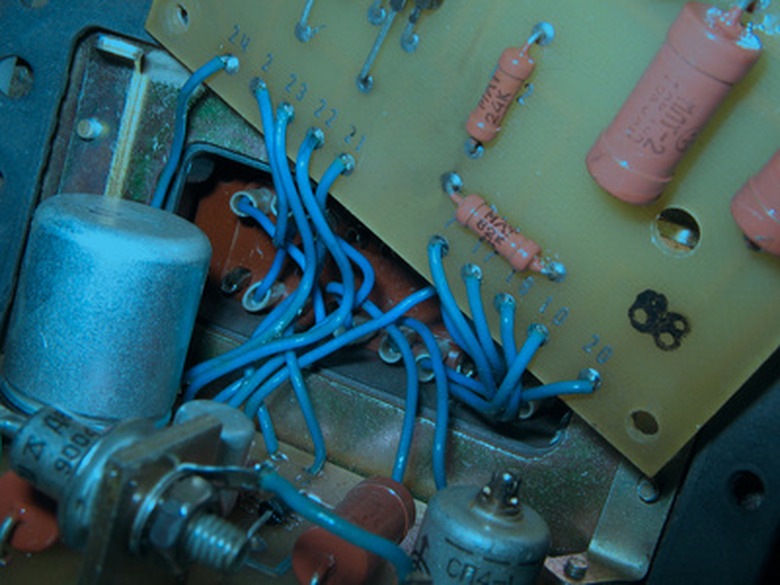How To Calculate Neutral Currents
Things Needed
-
Scientific calculator
-
Pencil or pen
-
Paper
The neutral current in a three-phase, four-wire wye system represents the imbalance of the three-phase conductors, also known as the "hot" conductors. If the three hot conductors are equal, as in the case of supplying a three-phase motor, there is no imbalance and the neutral current is zero. In a single-phase system, the neutral carries only the imbalance of the two hot conductors, an easy calculation. However, in a three-phase wye system, even if only two of the three phases and the neutral run a single-phase load, you must use the neutral formula.
Step 1
Note the neutral formula. If A, B and C are the three phase currents, the formula to find the neutral current is the square root of the following: (A^2 + B^2 + C^2 – AB – AC – BC).
Step 2
Use example phase currents of five amps, eight amps and 10 amps. Square each of the phase currents and add the total of the three numbers. Using these examples, the squared numbers are 25, 64 and 100. The sum of these numbers is 189.
Step 3
Subtract each multiplied pair of numbers from the current total. AB, or five multiplied by eight, is 40; AC, or five multiplied by 10, is 50; and BC, or eight times 10, is 80. The total of these numbers is 170. This number subtracted from 189 leaves 19.
Step 4
Take the square root of the calculated number. The resulting number is the neutral current. The neutral current in the example is about 4.36 amps.
References
- "Electricity 3: Power Generation and Delivery"; Jeffrey J. Keljik; 2009
